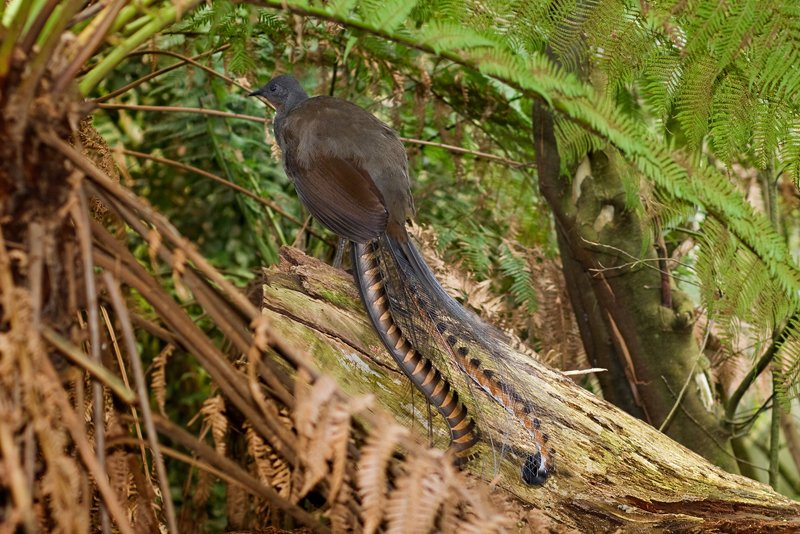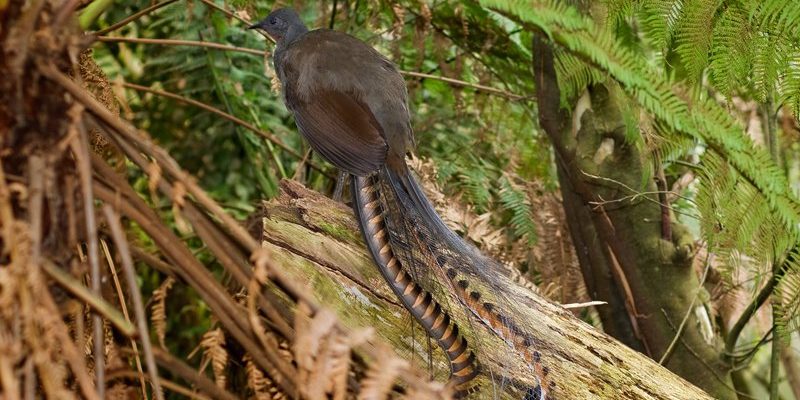
The Lyrebird is one of nature’s most fascinating performers. Imagine a bird that can imitate the sounds of its surroundings so accurately that you might think it’s part of the ambiance. From the rustle of leaves to the sounds of chainsaws, this incredible bird can mimic a variety of sounds with astonishing precision. Found mainly in the lush forests of Australia, the Lyrebird is not just a remarkable singer but also a captivating display of nature’s artistry.
With its stunning tail feathers and extraordinary vocal abilities, the Lyrebird has a lot to offer. What makes it even more interesting is its complex mating rituals, where males perform elaborate displays to attract females. This combination of beauty and talent makes the Lyrebird a favorite among bird watchers and nature enthusiasts alike. So, let’s dive deeper into what makes this bird so unique!
Species of Lyrebirds
There are two primary species of Lyrebirds: the Superb Lyrebird and the Albert’s Lyrebird. The Superb Lyrebird is the more famous of the two, known for its extravagant tail feathers that resemble a lyre when displayed. These tail feathers are not just for show; they play a crucial role in courtship rituals. On the other hand, the Albert’s Lyrebird is slightly smaller and more elusive, often found in more rugged terrains and known for its subtle, yet impressive, vocalizations.
Both species have adapted well to their environments but have different habitats. The Superb Lyrebird thrives in a range of forest types, from rainforests to eucalypt woodlands, while the Albert’s Lyrebird is mainly found in the cool rainforest regions of southeastern Australia. Understanding these differences helps us appreciate the biodiversity of these magnificent birds.
Physical Characteristics
Lyrebirds are visually stunning creatures. The males have long, flowing tail feathers that can span more than half a meter when displayed. These feathers are intricately patterned and can be fanned out during courtship, making the male look even more impressive. In contrast, females are smaller and less flamboyant, sporting more muted colors that help them blend into their surroundings.
In terms of size, adult Lyrebirds typically range from about 80 to 110 centimeters in length, with males being larger than females. Their bodies are covered in a mix of browns and greys, which act as camouflage. The Lyrebird’s beak is long and slender, perfectly designed for foraging through the leaf litter where they find insects and seeds—an important part of their diet.
Habitat and Range
Lyrebirds are native to Australia, primarily inhabiting the eastern and southeastern regions of the country. They love dense forests and woodlands, especially areas with plenty of undergrowth where they can forage. Their preference for damp, bushy environments allows them to thrive as they find the insects and seeds they need to eat.
These birds are surprisingly adaptable; they can live in various habitats, from moist rainforests to dry sclerophyll forests. However, they are sensitive to habitat destruction. If their environment is disturbed, their numbers can dwindle, making habitat conservation vital for their survival.
Diet and Feeding Habits
When it comes to food, Lyrebirds are omnivorous, feeding on a variety of insects, small invertebrates, seeds, and even fruits. They forage on the forest floor, using their sharp beaks to dig through leaf litter in search of tasty treats. You might spot one scratching around or turning over leaves to find a hidden meal.
Interestingly, their diet is not just about survival; it also influences their mimicking abilities. The sounds they hear while feeding—like the crunching of leaves or the calls of other birds—become part of their repertoire. This is why their songs can sound incredibly diverse, blending many different sounds into their unique melodic phrases.
Vocalization and Mimicry
The Lyrebird is perhaps best known for its vocal abilities. Males can produce a wide range of sounds, often mimicking other birds, animals, and even unnatural sounds like camera shutters or chainsaws. This skill is not only impressive but also serves a purpose—during mating season, males use these sounds to attract females, demonstrating their prowess.
You might think of their vocal performances as a sort of audition, where the best mimics have the best chance to attract mates. The more varied and exciting the sounds, the more appealing the male becomes. This rich vocal repertoire allows them to stand out in a crowded forest filled with the calls of various species.
Reproduction and Mating Rituals
The mating rituals of Lyrebirds are as elaborate as their songs. During the breeding season, male Lyrebirds establish territories and showcase their plumage and vocal skills to impress females. They’ll often perform in a specific area known as a “display site,” where they can have an audience of female Lyrebirds who are scouting for a mate.
These performances can include not just singing but also physical displays, such as fanning out their tail feathers and engaging in dances. Once a female chooses a mate, she will build a nest where she lays her eggs, and the male’s job is done. After mating, the female takes care of incubating the eggs and raising the chicks, usually alone.
Conservation Status
Sadly, like many species, the Lyrebird faces threats from habitat loss and environmental changes. Urban development, deforestation, and bushfires have significantly impacted their populations. Conservation efforts are critical to ensuring that these beautiful birds don’t vanish from our forests. Organizations are working to protect their habitats, educate the public, and promote biodiversity.
Fortunately, in some areas, populations seem stable, thanks to dedicated conservation programs aimed at protecting their natural habitats. It’s important to support these initiatives because, without them, Lyrebirds could be at risk of becoming endangered. Every effort counts in preserving the environment that supports these extraordinary creatures.
Interesting Facts About the Lyrebird
| Common Name: | Lyrebird |
| Scientific Name: | Menura |
| Size: | 80 – 110 cm |
| Habitat: | Eastern and southeastern Australia |
| Diet: | Insects, seeds, and fruits |
| Lifespan: | Up to 15 years in the wild |
| Mimicry Skills: | Can imitate other birds and sounds |
The Lyrebird is a true marvel of nature, blending physical beauty with extraordinary vocal talent. It’s a symbol of Australia’s rich wildlife and a reminder of the importance of preserving our natural environments. Whether you’re a birdwatcher or just someone curious about the natural world, the Lyrebird offers a glimpse into the incredible diversity of life on our planet.
So next time you hear a strange sound in the forest, take a moment to consider: could it be a Lyrebird showcasing its impressive mimicry skills? The world of these birds is not just about survival; it’s a captivating performance that connects us with the beauty of nature.
FAQ
What makes Lyrebirds unique compared to other birds?
Lyrebirds stand out primarily due to their incredible mimicry skills and the elaborate displays they perform during courtship. Unlike most birds, they can imitate a wide range of sounds—from other birds to mechanical noises—making them some of the best mimics in the animal kingdom. Their long, beautiful tail feathers also distinguish them, particularly during mating rituals.
Are Lyrebirds social or solitary?
Lyrebirds are generally solitary outside of the breeding season. Males establish territories to attract females, and during this time, they may be seen competing with other males for attention. Once mating occurs, the female takes on the role of raising the young alone. However, they can often be found in pairs or small groups during the breeding season.
How do Lyrebirds adapt to their surroundings?
Lyrebirds are highly adaptable and can thrive in various forest environments. Their coloring aids in camouflage, which protects them from predators. Additionally, their ability to mimic sounds provides an advantage—by imitating the calls of more dangerous animals, they can deter potential threats while foraging.
What is the breeding season for Lyrebirds?
The breeding season for Lyrebirds typically occurs during the spring and early summer months, although this can vary based on local climate conditions. During this time, males are most active in establishing territories and performing courtship displays to attract females.
How long does it take for Lyrebird chicks to fledge?
Lyrebird chicks usually fledge (leave the nest) about 8 to 12 weeks after hatching. During this time, the female cares for the chicks, feeding them and teaching them necessary survival skills. Once they fledge, the young Lyrebirds often stay close to their mother as they learn to forage independently.
Can Lyrebirds mimic human-made sounds?
Yes, Lyrebirds are famous for their ability to mimic human-made sounds, including camera clicks, chainsaws, and even car alarms. Their mimicking abilities are influenced by their environment, meaning if they hear something frequently, they are likely to incorporate it into their repertoire.
What threats do Lyrebirds face today?
Lyrebirds face several threats, including habitat destruction due to urban development, agriculture, and logging. Climate change also poses a risk, affecting their habitats and food sources. Conservation efforts are critical to protect these unique birds and their environments.
Are Lyrebirds endangered?
While not currently classified as endangered, some populations of Lyrebirds are declining due to habitat loss and other environmental pressures. Conservation organizations are working to monitor their numbers and protect their habitats to ensure their survival for future generations.
How can I help protect Lyrebirds?
You can help protect Lyrebirds by supporting conservation efforts aimed at preserving their natural habitats. Participating in local conservation programs, spreading awareness about the importance of biodiversity, and reducing your environmental footprint are all effective ways to contribute to their survival.
Where can I see Lyrebirds in the wild?
Lyrebirds are primarily found in the forests of eastern and southeastern Australia. National parks such as the Great Otway National Park and the Blue Mountains are great locations for spotting these incredible birds. Early mornings or late afternoons are often the best times to observe their courtship displays and listen to their unique songs.
What do Lyrebirds eat?
Lyrebirds are omnivorous and primarily feed on a diet of insects, small invertebrates, seeds, and fruits. They forage on the forest floor, using their keen eyesight and sharp beaks to find food hidden among the leaf litter. This diet not only sustains them but also helps them develop their mimicry skills by exposing them to a variety of sounds.

